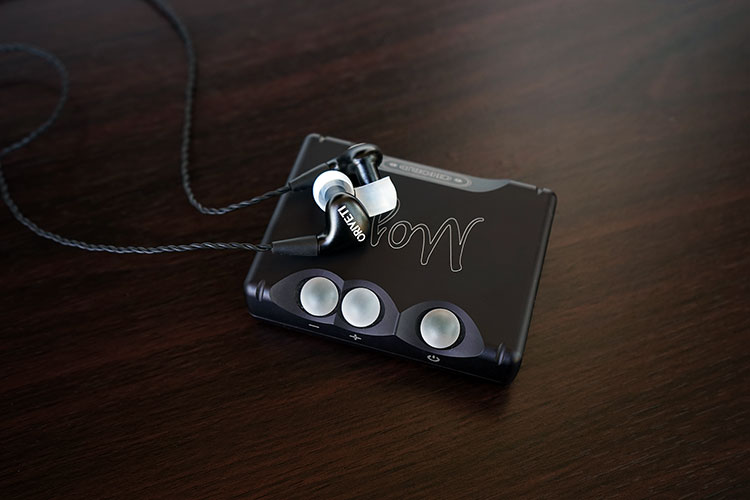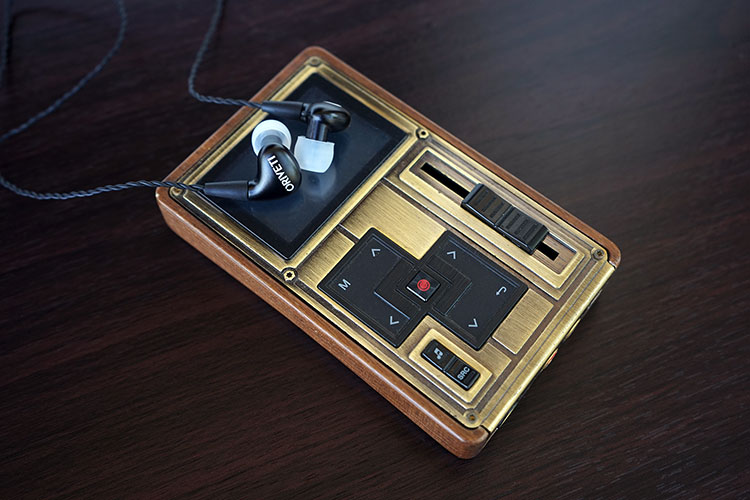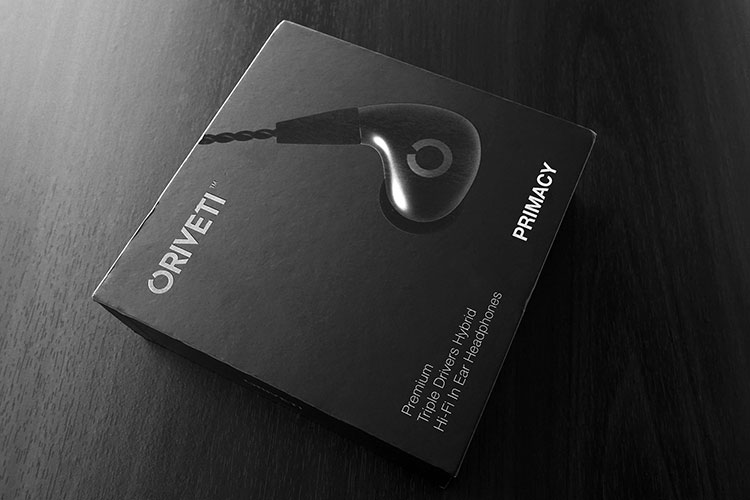Sound Impressions
Summary
Kudos to Oriveti for producing a tone that whilst averse to any thickness and richness is certainly balanced and smooth and lacking in any unwanted sibilance or harsh peaks. Overall, I find the Primacy to be a relaxed but detailed listen that errs more to the musical side than anything overly analytical.
I do detect a slight emphasis in a few areas such as the mid-bass and the vocal presence around 1-2k as well as around 7k. Now usually a 7k rise can be painful, producing splashy cymbal work with poor sibilance control but that does not seem to be the case with the Primacy.
There is some tuning going on in the upper mids lower treble around 5k which purposely downplays anything too energetic. The resulting peak around 7k feels therefore like a slightly false peak given the suck-out at 5k.
Upper treble is tuned down a bit also so those who enjoy a very top-end sparkle may not get it with the Primacy which chooses instead to focus on lower treble performance.
Articulation is there but it is not as forward sounding as some other Knowles drivers and frankly that lack of stridency in its tonality is a very welcome thing. You do however get a more intimate soundstage with more width than height as a result of a slightly relaxed upper treble and sub-bass tuning.
There is plenty of detail in the Primacy by the way, don’t let those relaxed sub-bass and upper treble performances fool you into thinking you are missing out. It has a turn of speed and excellent clarity throughout. The dynamic driver also gives a nice little layer of warmth as a contrast to the otherwise neutral tones from the 2 BA drivers.
Bass
Bass performance is controlled, warm to neutral, and tight. Despite it packing a dynamic driver Oriveti has resisted letting it go wild on the Primacy so you get a nice fullness around the 100-200hz mark with a slight mid-bass elevation but otherwise it’s relatively flat and very well-behaved.
Sub-bass extension is decent but not earth-shattering so you won’t find it possibly as the best choice for orchestral work with a heavy double bass emphasis but it does convey a better response for mid-aced rock and lighter EDM tracks.
I must admit for a dynamic driver it is far from sluggish showing very little evidence of bloat, bleed, or lengthy delays. It is not as fast as a BA-designed bass response but it is more a natural-sounding bass signature.
Mids
Mids on the Primacy are clean and clear but with a slightly emphasized (1-2k) vocal presence and upper mid-range giving it a slightly more forward feel.
Male and female vocals as well as lead guitar solos take prominence which is a definite positive to someone like me who enjoys a good vocal performance. The Primacy does vocals very well indeed. It is not just the slightly forward nature of the vocal stage but the lack of grain and sibilance particularly for female vocals.
The Primacy is not overly smooth though. Vocals are neither blunted nor veiled on this hybrid IEM in an attempt to hide any deficiency in the BA drivers. They are clean and clear.
There is a little drop in the lower mid-range though so low-end rhythm guitar work lacks a bit of presence and can often take second place to what is happening in the upper mid-range such as cymbal crescendos and large-scale vocal harmonies.
I really find the Primacy comes into its own with spare arrangements or vocal-centric acoustical numbers.
Treble
The Primacy has a suck out at 5k which gives a slightly enhanced peak at 7k but thankfully the Primacy doesn’t get too hot or distracting.
There is a bit of sparkle on tambourine crashes and cymbal work so you will be able to pick it out easily enough on tracks that make excessive percussion use such as “No Speak No Slave” from the Black Crows.
Since beyond 8k, the Primacy doesn’t have any further audible emphasis this makes the 7k area the most energetic yet least natural aspect of the Primacy’s treble performance. It also takes a little off the extension and air beyond.
However, given the propensity of some Knowles drivers to get a little too bright up top it may well be a very cute move indeed by Oriveti to relax the upper treble just a little to keep that generally smooth and balanced tonal feel of the Primacy.
In all other respects, the Primacy’s BA driver treble response is very good indeed with top-notch clarity and articulation regardless of pace.
Synergy
This is an 11Ω hybrid IEM with a 107db @1kHz 1Vrms SPL rating. It should be relatively easy to drive out of just about any source but I also rate it as one of my more sensitive IEMs alongside the Jupiter and the SE846 and as such noise and hiss can creep in depending on what source you plug it into.
For reference amps/DACs such as the Theorem 720 and DAPs such as the Shozy Alien v1 (silver edition) will provide a discernible amount of hiss. Higher resistance and less efficient IEMs do better on source or DAC examples such as these.
The Primacy really excels on low-powered or highly efficient sources. Even my lightweight BB Passport is only hitting 5/10 on the volume which is very low indeed compared say the Westone W4, the Noble 4 Classic, and the RHA T20 which drive happily on 8/10.
It could well be one of the most efficient hybrid IEMs I have tested to date. Certainly, you have no need to upgrade the X7 IEM module to the AM2 for power purposes though tonally I found the AM2 to be a bit more musical sounding paired with the Primacy than the flatter and thinner AM1 module.
Noise levels were excellent on lower-end DAPs such as the FiiO X3ii and their mid-range X5ii. I could detect higher noise levels using the Hidizs AP100 though. Much like the 11Ω Fidue A83 it seems to generate a lot more hiss at all levels.
Hooking anyone of those DAPs through to the Chord Mojo worked a real treat with a beautiful black background, zero noise, and wonderful gain control.
The Mojo’s thicker more forgivable sound paired pretty well with the Primacy but it was not my absolute favored tonal match given the Mojo is already very forgiving at the absolute top end and is an area the Primacy could do with a slight tweak.
Bass performance though was authoritative and weighted, resolution was excellent, and vocal performance was very natural with the Primacy paired with the Mojo.
A beautiful pairing was the Colorfly C4 Pro using the quarter jack socket (adapter). It had zero noise, very smooth tones, and an excellent vocal presence. I actually preferred this pairing to quite a few other DAPs and ended up using the C4 as my reference DAP for this review. It’s an old DAP by today’s standards but still very competitive tonally.
Select Comparisons
Westone W4
The Westone 4 is slightly larger, though like the Primacy, it fits very well with excellent isolation depending on the tips you use. It has a higher ohm rating than the Primacy so it does require a bit more juice to drive but not a huge amount more.
It does benefit a bit from a decent amp though like the Primacy high ohm resistance outputs will generate unwanted noise and hiss such as the Theorem 720 and AP100 though on a much lesser scale.
Its quad BA design sounds a little thicker in the mid-range and lower treble with more texture in vocals but its bass performance is slightly more subdued than the Primacy’s enhanced bass response. The Primacy’s dynamic driver is the key here sounding more natural and having that slight mid-bass emphasis and warmth.
Noble 4 Classic
The 4 Classic needs a little bit more juice than the Primacy. Rated at 30Ω it does have some performance improvements with a better amp than a smartphone but it is not the worst I have heard.
It is slightly larger than the Primacy but seals well depending on your tips and comes also with a detachable cable though it’s 2-pin and not MMCX. It also deals better with noisy amps than the Primacy.
Tonally they are worlds apart with the Noble 4C being much flatter more neutral and very unforgiving compared to the smoother and easygoing Primacy. The 4C is the ultimate ‘what you put in is what you get out’ universal IEM for me and a reviewer’s tool more than a listener’s tool.
The Primacy is more flexible and works better with lossy tracks low-powered amps and smartphones. Analytical lovers will enjoy the 4C more but the flexibility and matchability for on-the-go listening belong to the Primacy.
RHA T20
Though slightly similar in form factor the T20 metal molds are much heavier than the Primacy and they do have a more noticeable presence in your ear as a result.
Having said that isolation is excellent and almost on par with the Primacy (tip dependent). This is a 16Ω earphone but with a much lower 90db SNR so it is not as efficient as the Primacy. It isn’t precisely noise-free either on units such as the Theorem 720 but considerably less noisy than the Primacy side by side.
Putting both through their paces on more sensitive gear it becomes apparent the T20 doesn’t have the same level of mid-bass emphasis (reference filter) with slightly more prominent sub-bass presence and actually sounds just a little more realistic as a result.
I flip-flopped a little on vocal performance between the two. The Primacy sounded the smoother of the two but the T20 just had that bit more texture and character.
Sibilance on both is well controlled but the T20 lacks noticeable peaks beyond 2-3k. By contrast, the Primacy is a bit cleaner and smoother and with a touch more sparkle in the treble performance with a more noticeable peak around 7k.
Neither headphone has anything distinctly peaky around 10k with the Primacy rolling off just that bit quicker.
Our Verdict
I give props to Oriveti for their first IEM onto the market in the Primacy. This hybrid dual BA single dynamic driver IEM has enough chops to give the impression that Oriveti has been in this business for longer than just one launch product.
The physical package is excellent, one of the best actually. There is a very wide range of tips, an excellent, if somewhat large metal pill case not to mention adapters galore in a very smart retail package.
Tonally it is very good and I am really glad Oriveti has worked hard on these drivers to produce a very smooth consumer consumer-orientated sound that sounds musical yet clean and clear.
It works a charm with vocals, intimate track, and acoustics but doesn’t sound in any way sloppy with harder-hitting rock and EDM. For a micro dynamic driver, it’s tight, fast yet natural sounding. The treble could do with a touch more work for me, perhaps less of the 7k peak and 5k suck out but what they have here is sibilant-free and fairly well controlled.
The Primacy is incredibly efficient, easy to drive, and built to a very high standard indeed. Isolation is excellent and there is no mucking about for a sweet spot. I rate these as more satisfying comfort-wise than the Fidue A73/83 series and the UE900, perhaps up there with the Westone W4 for a universal light low-profile fit.
At $299 you need to bring a lot to the table to get anyone’s attention. It is a saturated market full of ideas and competing IEM but I think Oriveti has done a pretty good job in terms of presentation and tonality to warrant serious consideration.
ORIVETI Primacy Technical Specifications
- Driver: Exclusive Dual Armature Driver & 8.6mm Dynamic Driver
- Impedance: 11 Ohm
- Frequency Response: 20 – 20000Hz
- Sensitivity: 107+-3dB/mW, 1000Hz
- Distortion: <1%
- Plug: Gold-plated 3.5mm Stereo Plug
- Cable: 1.2 m





